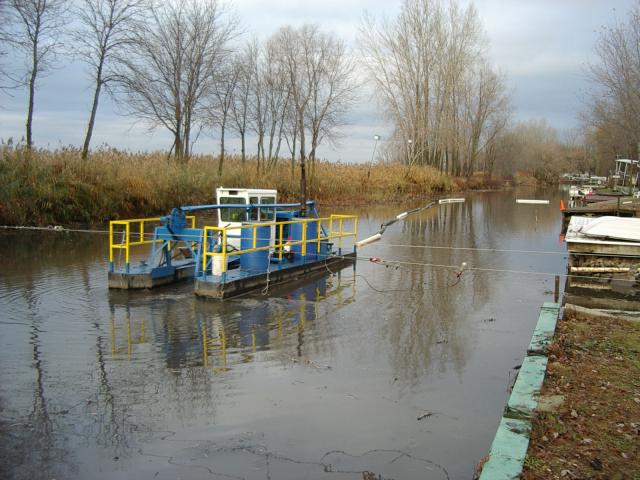

activities that involve only the cutting or removing of vegetation above the ground (e.g., mowing, rotary cutting, and chainsawing) where the activity neither substantially disturbs the root system nor involves mechanized pushing, dragging, or other similar activities that redeposit excavated soil material.These discharges are subject to section 402 of the Clean Water Act even though the extraction and deposit of such material may require a permit from the Corps or applicable State section 404 program. discharges of pollutants into waters of the United States resulting from the onshore subsequent processing of dredged material that is extracted for any commercial use (other than fill).The term discharge of dredged material does not include the following: any addition, including redeposit other than incidental fallback, of dredged material, including excavated material, into waters of the United States which is incidental to any activity, including mechanized landclearing, ditching, channelization, or other excavation.the runoff or overflow from a contained land or water disposal area and.the addition of dredged material to a specified discharge site located in waters of the United States.The term includes, but is not limited to, the following ( 33 CFR 323.2(d)(1) and 323.2(d)(2)): Discharge of Dredged Material - any addition of dredged material into, including redeposit of dredged material other than incidental fallback within, the waters of the United States.In order to determine if you need a permit it is important to understand the definitions of the pertinent terms. Ī Federal facility must obtain a permit from the Army Corps of Engineer prior to dredging or filling any wetlands. For details on the Corps of Engineers permitting process and answers to common questions, visit. But, the EPA does regulate permits for ocean dumping of dredged material.

Define dredge code#
It is regulated by the Corps of Engineers, Department of the Army under Title 33 of the Code of Federal Regulations (CFR). The requirement for a permit to dredge or fill a wetland is not regulated by the U.S. The term "fill material" does not include any pollutant discharged into the water primarily to dispose of waste, as that activity is regulated under section 402 of the CWA. "Fill material" means any material used for the primary purpose of replacing an aquatic area with dry land or changing the bottom elevation of a water body. "Dredge" is material that is excavated or dredged from waters of the United States. Any activities involving dredging and filling wetlands are permitted by the Army Corps of Engineers. Our next-level cyber security services leverage decades of expertise across the maritime industry, including smart ships, networks, telecommunications, ship design, and safety and security of ship operations. As a result, ship owners and managers must understand that cyber security is integral to safety management in shipping and offshore operations.īureau Veritas takes cyber security seriously, identifying it as a key challenge for shipping. Sophisticated-and often successful-cyber-attacks are a reality worldwide.

At the same time, digitalization also poses new problems for the shipping industry. Intelligent data and r eal-time, connected equipmen t have made a world of difference for dredger operations.


 0 kommentar(er)
0 kommentar(er)
